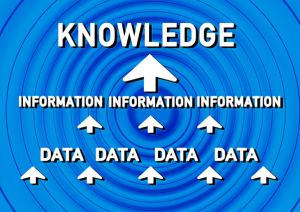Our world is digital. From writing shopping lists to reading our favorite magazines, everything happens online. In this context, using search engines to find a home is a natural thing to do. Back in 2013, as much as 90 percent of home buyers searched for information on the internet before making a purchasing decision.
Even more, last year, 99 percent of Millennials used online websites to find themselves a home. In this context, real estate had to go hand in hand with technology to meet customers’ expectations.
Technology has changed the way real estate professionals and organizations work. On our road to smart cities, companies integrate smart home devices into their offers. And use efficient software and AI tools, as part of their efforts to deliver customized products and services.
Yet, according to the “Real Estate in a Digital Age” Report for 2017, for almost half of the companies in the industry, the main challenge for the next couple of years is keeping up with technology and become more efficient. Because technology and innovation generate a wide series of changes inside the real estate industry.
1. Customer Relationship Management Tools Simplify Deal Processes
Management platforms are one of the most important changes technology has made in the real estate industry. No more Excel or Google Spreadsheets to fill manually, no more errors in your schedule or missed data.
A CRM for brokers can track, manage and analyze all your interactions with just a few clicks. This specific software doesn’t simply collect the information about your clients, but they analyze it and build relevant profiles to can help you provide better services. With the right software, you can choose the right properties for each client, depending on their profiles, as well.
Your clients benefit from a customized user experience and you get to close deals faster and with less effort. Better than that, CRM allows you to automate your everyday tasks and your marketing. You can communicate with your clients before and after sales, through scheduled emails, automated reminders and text messages.
Most CRM tools have mobile versions, so you can take care of your business right from your smartphone. And you can get analytics and performance reports about your current activities on the same platform.
2. Virtual Reality Transforms The Real Estate Industry
Millennials make a large group of home buyers. They’re young people, with an appetite for web content and mobile apps. Even more, older generations prefer to use technology to find their ideal homes, as well.
There’s plenty of apps on the market that can help potential home buyers to learn more about real estate opportunities. But, you often hear your clients complain that reality is a lot different from the photos shown online. Virtual reality, on the other side, allows you to provide complete virtual guided tours for your clients.
Potential homebuyers can analyze houses right from their computers or smartphones. Even more, they can customize rooms and spaces virtually, for a completely interactive experience. You can show your clients how the house would look like with brighter colors, better floors or with new walls.
Virtual reality has changed the real estate industry like no other technology ever before. Using VR headsets, you can walk through a house in construction and let your clients see how their future home will look like. There’s so much you can do to boost your sales with some 2-D images and some 3-D walkthroughs.
Of course, good old traditional open houses still play their part in a lead generation game.
3. Real Estate Professionals Can Now Use Data-Driven Insights
Corporate real estate data is essential to increase productivity and to generate better decisions, based on useful information. Real estate developers can use big data to understand what spaces work best for potential buyers in a specific area. They can learn how to update their projects to meet clients’ expectations in terms of energy, environment, and social responsibility.
What used to take days and weeks of work with spreadsheets is now available with just a few clicks. You have access to actionable insights, as new tools give you context, instead of plain data. The new technology gives you a wide view over the market by putting together large amounts of collected data about properties, geographical details and buyer’s preferences to know how the value of properties will change in the long run.
Data-driven insights open the doors for predictive analytics, which allow real estate professionals and organizations to understand customer’s behavior and make better decisions about their investments. Big data generates real-time buy and sell recommendations, allowing you to provide the best solutions for your clients in less time.
4. Blockchain Technology Brings in More Change
The real estate industry will get significant benefits from using blockchain technology, such as faster transactions, increased transparency, and secure data storage. You can finally have real-time access to an accurate and updated national database about properties, companies, agents, and buyers.
Right now, a lot of information and title records aren’t even online, because it’s considered not safe. But, once stored in the blockchain, all property information you need can become available for agents and organizations.
Transactions will get faster, as well, and all your clients will be protected against scams. Which means millions of dollars saved every year for buyers and property owners.
Technology in the real estate industry doesn’t mean the end of an era, but a better business environment for professionals and buyers. Tech changes are keeping the industry in line with your customers’ expectations, allowing you to provide customized services.
















